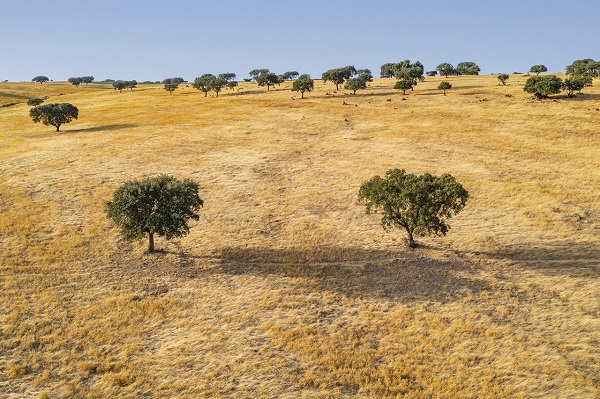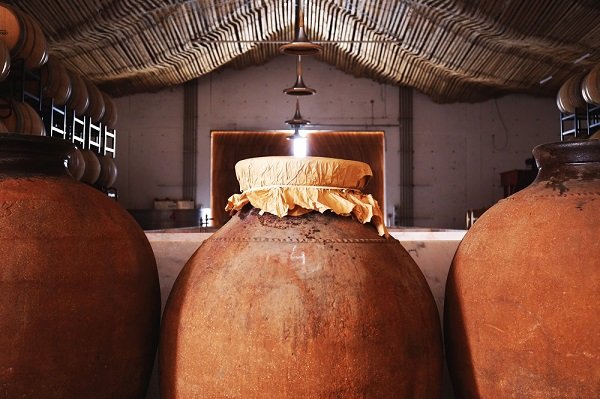In the wonderful seaside town of Vila Nova de Milfontes, sitting humbly down a narrow street of whitewashed residences, is Tasca do Celso, one of the Alentejo's finest destination restaurants. Some might say it was the beaches that put this town on the map, or its 15th Century defensive role at the confluence of the Mira River, but I like to think it was Celso (real name: José Ramos Cardoso) way back in …1999. That's when this pilgrimage-worthy restaurant opened and quickly asserted itself as a gastronomic reference point.
My server, José, wastes no time getting me started. We cobble together the perfect meal from the handwritten chalkboard of daily specials that jumps from table to table. A beautiful sardine and tomato bruschetta to start, followed by a razor clam seafood rice that would be perfectly suited as a Last Meal. When I tell José I feel like a red wine, however, his challenge-accepted stance really springs into action and he pours an absolutely lovely blend of Aragonês, Syrah and Pinot Noir from the Danish-American winemakers at Cortes de Cima, 70 miles inland from the village. It's a perfect Alentejo wine, pulled from one of the best cellars in the region. By the time the wonderful sericaia.” (a spongy desert made with eggs, sugar and cinnamon) shows up, it's goodnight nurse. I stumble back to my room at Monte do Zambujeiro, another victim of Celso's magic.


On day three, the road heads inland, where the Alentejo's often savannah-like landscape comes into full focus. Holm oaks, olive and cork trees scattered about the rolling bronzed hills evoke Africa in the most startling of ways. Welcome to the montado (Mediterranean forest). This is perhaps nowhere more apparent than the astonishing Agroturismo Xistos near Beja. Less a six-room rural escape than an altruistic sustainable philosophy of its architect, brainchild and owner, the passionate Paula Mira, this biodiverse getaway is a call to action. Staying here among its 400 hectares of unadulterated panorama is a lesson is how to live harmoniously in nature, alongside the Alentejo cows, wild boar, foxes, badgers, otters, hares, genets and innumerous species of birds and butterflies that co-exist in this living natural museum.
The pool is wonderful, the sunsets and moon rises are miraculous and the tomatada (a shakshuka-like egg concoction with fresh tomatoes from their organic garden) delicious, but Mira hasn't created this haven for that – you are here to immerse yourself in the Alentejo way of life and to contract Mira's contagious enthusiasm for the natural world. Nothing here goes to waste — the "accidents" of the forest are used for bio products, essential oils and herbs for cooking and naught on the land isn't serving a biological or ecological purpose. It's one of Portugal's most unique properties.
From Xistos, I hit the road for Mértola, a hilltop town that time forgot with atmospheric terraced streets overlooking the River Guadiana. Once considered the last port of the Mediterranean, Mértola was awash in wealth and exchanged hands throughout the centuries between Phoenicians, Carthaginians, Romans and the Moors. The Roman empire once ran a hefty taxation scheme here, shaking down boats both coming and going (the remnants of the stone toll booth remains). The road into town is flanked by fencing to protect the healthy lynx population of the surrounding Parque Natural do Vale do Guadiana. The menacing highway signage warning "Lynx Crossing" is a first for me!
I spend the next afternoon exploring the area around Vidigueira, an Alentejo wine region with a Roman pedigree. Many wineries still use the amphora method of aging wine in large clay vessels and the area puts on a fantastically fun festival every year in nearby Vila de Frades known as VitiFrades (picture a rowdy procession of townsfolk and visitors roaming from winery to winery in town, each offering up glasses of their proud juice and snacks). But the truly good stuff doesn't come out of the amphoras.
* This is the second dispatch in a three-part series from the road in Portugal, where journalist Kevin Raub is exploring the wonders of the Alentejo. Click here to read the first installment.



